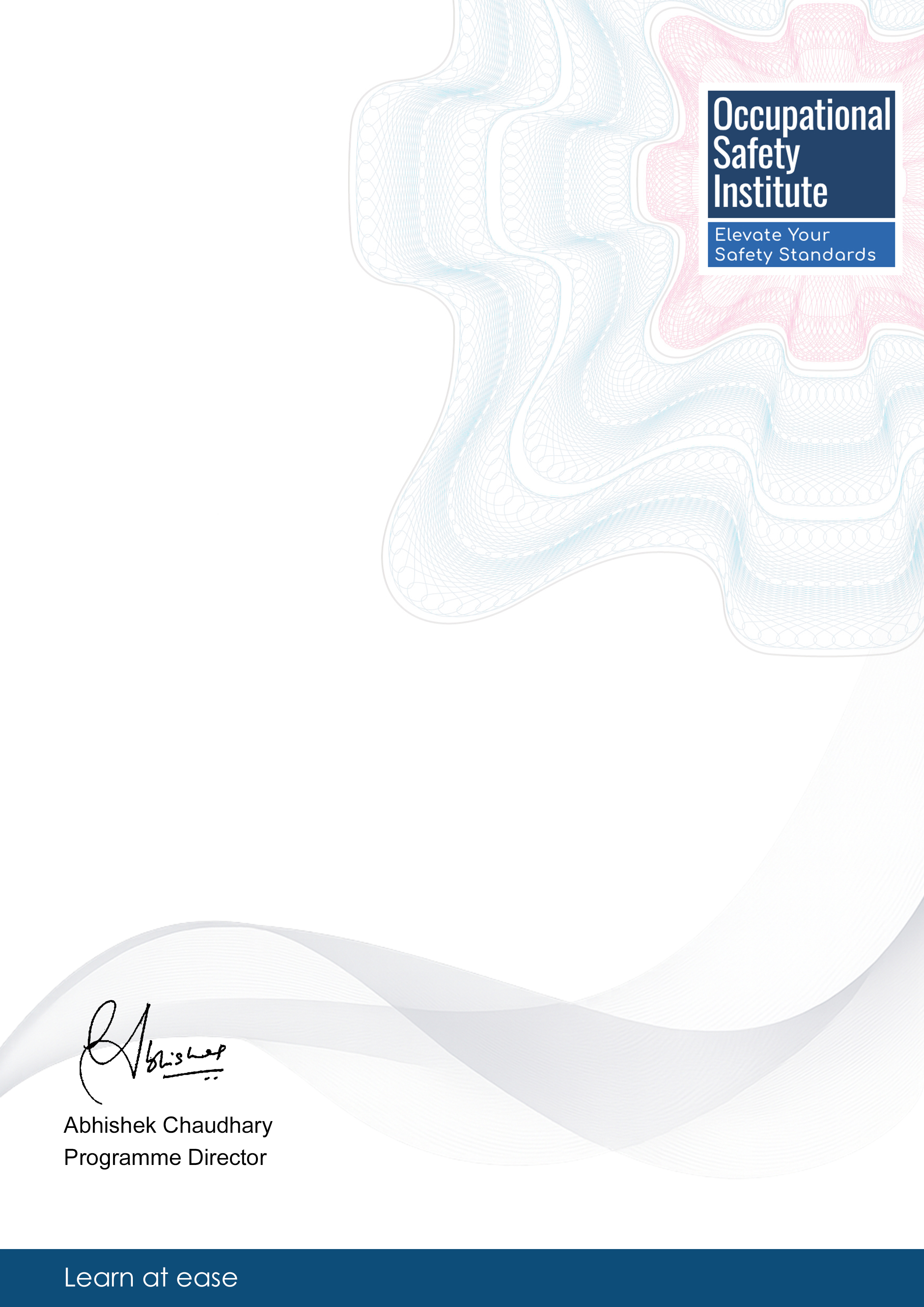Module 1: Understanding Manual Handling Risks
This module provides an overview of manual handling risks in the workplace and the importance of proper handling techniques.
This course provides insights into managing manual handling risks and implementing ergonomic solutions in the workplace. Ideal for health and safety professionals and individuals seeking to enhance workplace safety and productivity.
4.4/5
|96 reviews
|418 students enrolled
Comprehensive, industry-recognized certification that enhances your professional credentials
Self-paced online learning with 24/7 access to course materials for maximum flexibility
Practical knowledge and skills that can be immediately applied in your workplace
This module provides an overview of manual handling risks in the workplace and the importance of proper handling techniques.
Explore ergonomic principles and solutions to improve workplace design and prevent musculoskeletal disorders.
This specialized module focuses on the science of ergonomics and its application in preventing musculoskeletal disorders (MSDs). You'll learn how to design workspaces that accommodate human capabilities and limitations.
Musculoskeletal disorders account for nearly 33% of all workplace injuries, with proper ergonomic interventions reducing these incidents by 50-90% according to OSHA data.
Learn practical strategies for implementing safe manual handling practices to reduce injuries and promote a culture of safety.
Examine real-world case studies and applications of manual handling risks and ergonomic solutions in various industries.
This programme includes comprehensive study materials designed to support your learning journey and offers maximum flexibility, allowing you to study at your own pace and at a time that suits you best.
You will have access to online podcasts with expert audio commentary.
In addition, you'll benefit from student support via automatic live chat.
Assessments for the programme are conducted online through multiple-choice questions that are carefully designed to evaluate your understanding of the course content.
These assessments are time-bound, encouraging learners to think critically and manage their time effectively while demonstrating their knowledge in a structured and efficient manner.
The health and safety industry offers diverse career prospects, including roles in safety management, consultancy, risk assessment, and compliance.
Professionals can progress to senior management positions, specialize in ergonomics, or pursue further education in occupational health and safety.
Responsible for implementing safety policies, conducting risk assessments, and ensuring compliance with regulations.
Focuses on optimizing work environments to prevent musculoskeletal disorders and improve employee well-being.
Provides expert advice on workplace health and safety practices, conducts audits, and develops health promotion programs.
Professionals can benefit from networking opportunities, industry-recognized certifications, advanced training courses, and increased job market demand for health and safety experts.
Occupational Therapist
"The course helped me implement ergonomic solutions effectively, enhancing patient care by reducing manual handling risks in healthcare settings."
Health and Safety Officer
"I could identify key manual handling risks more efficiently after completing the course, leading to a safer work environment for our employees."
HR Manager
"This course empowered me to develop strategies that prioritize employee well-being, resulting in improved productivity and morale within our organization."
Physical Therapist
"Thanks to this course, I am now applying best practices in manual handling and ergonomics, ensuring optimal care delivery with reduced injury risks."
Upon successful completion of this course, you will receive a certificate similar to the one shown below:

Undergraduate Certificate Manual Handling Risks and Ergonomics Solutions
is awarded to
Student Name
Awarded: December 2025
Blockchain ID: 111111111111-eeeeee-2ddddddd-00000
No specific prior qualifications are required. However, basic literacy and numeracy skills are essential for successful completion of the course.
The course is self-paced and flexible. Most learners complete it within 1 to 2 months by dedicating 4 to 6 hours per week.
This course is not accredited by a recognised awarding body and is not regulated by an official institution. It is designed for personal and professional development and is not intended to replace or serve as an equivalent to a formal degree or diploma.
This fully online programme includes comprehensive study materials and a range of support options to enhance your learning experience: - Online quizzes (multiple choice questions) - Audio podcasts (expert commentary) - Live student support via chat The course offers maximum flexibility, allowing you to study at your own pace, on your own schedule.
Yes, the course is delivered entirely online with 24/7 access to learning materials. You can study at your convenience from any device with an internet connection.
Animal Handling for Petting Zoos
This professional certification course on Animal Handling f…
Nutritional Science and Ergonomics in Health and Safety Management
This course explores the integration of Nutritional Science…
Ergonomics in Fashion Illustration for Perfume Bottles Certification
This course on Ergonomics in Fashion Illustration for Perfu…
Ergonomics Principles in Manual Handling Techniques
This course delves into the principles of ergonomics in man…
Disclaimer: This certificate is not intended to replace or serve as an equivalent to obtaining a formal degree or diploma. This programme is structured for professional enrichment and is offered independently of any formal accreditation framework.